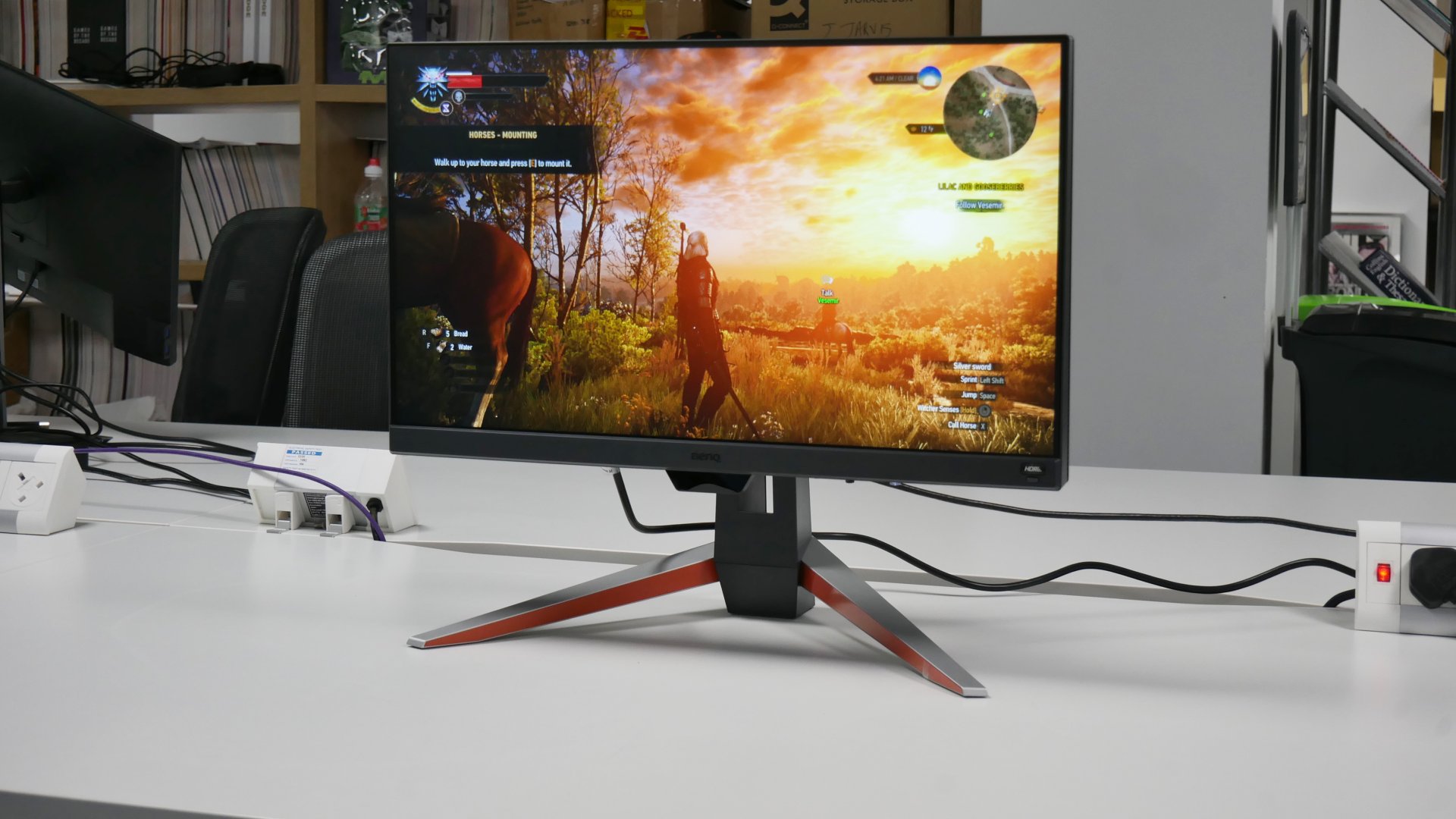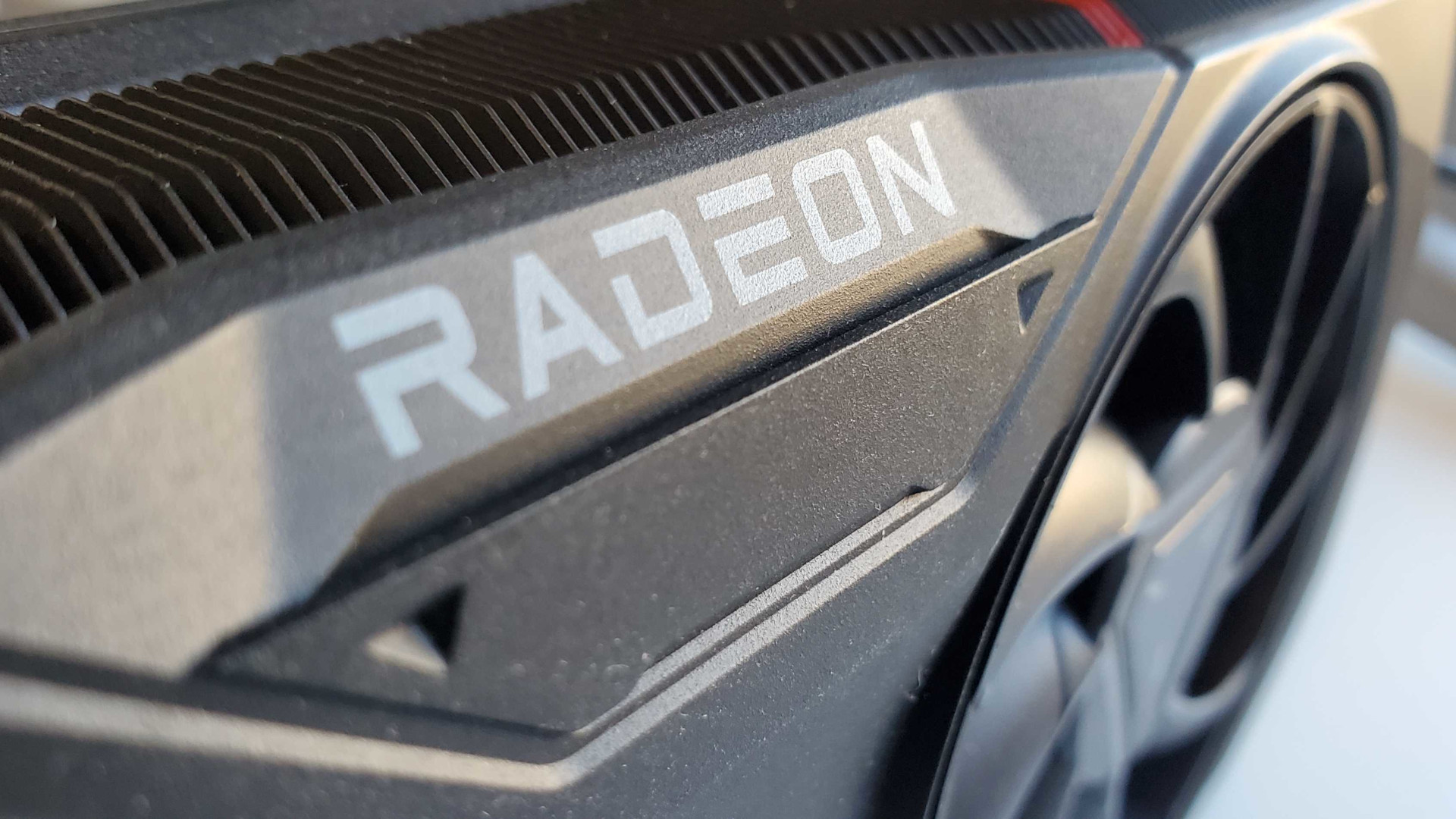
Proof positive that good gaming hardware doesn't have to be painfully pricey.
In an age of megabucks GPUs, $200 seems like a pitiful amount of money for, well, almost anything. But BenQ is here to tell you it’s enough for a pretty darn good gaming monitor, the BenQ Mobiuz EX240, to be precise.
On paper, this 24-inch panel ticks a lot of boxes for entry-level esports. It’s a 1080p model—predictable enough—hits 165Hz, and offers IPS panel tech with 1ms response times.
The 1080p and 165Hz refresh is obviously relatively low-end stuff by today’s top gaming monitor standards. But it’s a combination that makes plenty of sense. After all, if your monitor budget is $200, you’re unlikely to be stretching to a $1,000 GPU.
In other words, you probably can’t hit 240Hz or 360Hz in a lot of games, anyway. Obviously older titles like CS: Go will fly along on lesser graphics cards at those kinds of frame rates. But the latest Call of Duty release with the settings cranked up? Not so much.
Anyway, if the core spec hits the spot, what about the finer details? This certainly doesn’t look like a budget offering, relatively diminutive 24-inch proportions aside. It’s slickly styled and feels well built, even if it is all plastic.
(Image credit: Future)
Screen size: 24-inch
Resolution: 1,920 x 1,080
Brightness: 350 nits
Response time: 1ms MPRT
Refresh rate: 165Hz
Viewing angle: 178° H&V
Contrast ratio: 1,000:1 (panel native)
Features: IPS panel, 99% sRGB, adaptive sync, 1x DisplayPort 1.2, 2x HDMI 2.0, 2x USB-A, HDR10
Price: $200 | £200
The stand also features height, tilt and swivel, and connectivity includes both DisplayPort and HDMI, with both inputs supporting the monitor’s full 165Hz refresh. So, this is a decent candidate for sharing with a console. It’ll do 120Hz over HDMI.
Elsewhere, there are arguably few surprises hiding within the spec sheet. BenQ rates the Mobiuz EX240 at 350 nits brightness and includes HDR10 support. There’s no VESA certification or local dimming. So this isn’t a remotely serious attempt at an HDR panel, but it will process an HDR signal correctly, which is something.
The panel’s native contrast is 1,000:1 and BenQ doesn’t quote DCI-P3 coverage, which tends to be the case when said coverage is limited. Not that the last word in color fidelity is pivotal for this kind of gaming panel. It ain’t. Just don’t expect to be doing pro-level content creation on the side.
(Image credit: Future)
This is a pretty vibrant, punchy panel.
Anyway, you also get a pair of feeble 2.5W speakers—which we wouldn’t recommend using for anything other than when in a pinch—an integrated power supply, which is nice for reducing clutter and a two-port USB-A hub for desktop connectivity. There’s no USB-C support at all, but then there really wasn’t likely to be at this price point.
As for actual image quality, the first out-of-the-box impressions are good. This is a pretty vibrant, punchy panel. The viewing angles are good and the default color calibration betrays no real nasties. There is a little compression at the darker end of the color spectrum. But, generally, this monitor has been fairly well set up well.
Head in-game and the good news continues. BenQ claims 1ms response by the MPRT metric. In broad terms, MPRT response figures tend to be lower than grey-to-grey for a given monitor, putting this panel roughly in the 2ms region for GtG response.
Image modes. The BenQ Mobiuz EX240 has too many of them, and most of them are pointless. (Image credit: Future)
And it feels very much good for 2ms. This is a snappy little panel. In subjective terms, it looks little different to the best 1ms GtG IPS monitors. Sure, you could tease out the differences with high speed photography, but in terms of actual gameplay, motion blur is kept to a thoroughly acceptable minimum.
Speaking of response, you can choose from three levels of overdrive. The fastest setting does introduce a little overshoot and inverse ghosting, but the middle option is a nice overall compromise.
Sticking with the subject of speed, latency is nicely kept in check. Obviously you’ll want even higher refresh than 165Hz for the absolute last word on low latency, but you’d have to be pretty trick at esports before you felt that the latency performance of this panel was holding you back.
For the price point, the connectivity is decent. (Image credit: Future)
As for what’s less impressive, well, the first problem is the OSD menu and the options therein. It’s absolutely stuffed with various color presets for gaming and movies and weird and confusing opinions for HDR modes and even just the backlight level.
Most of these options are close to useless and BenQ would do well to stop showing off and simplify the menu dramatically. On that note, it’s not a huge surprise to find that the EX240’s “HDR” performance is underwhelming.
Running the likes of Cyberpunk 2077 with HDR enabled, it’s hard to say it looks any better than in SDR mode. Still, at least it doesn’t look worse and it’s possible to get SDR content looking decent in HDR mode using Windows’ built-in settings tool, which is more than you can say for a lot of monitors.
(Image credit: Future)
(Image credit: Future)
(Image credit: Future)
(Image credit: Future)
Truth be told, the BenQ Mobiuz EX240’s HDR support is largely irrelevant for gaming. What it will do, however, is allow you to watch HDR video content without the colors being all washed out. A niche concern, very likely, but then you’re probably not paying any extra for the privilege.
All told, there’s a lot to like here. Granted, this monitor has plenty of limitations. 1080p feels pretty stingy these days as native resolutions go, but on a smallish 24-inch monitor, the pixel density is tolerable and the main benefit is that you don’t need to be running a cryptocurrency Ponzi scheme to pay for this monitor.
That you can have a decent IPS gaming panel running at 165Hz with good pixel response, reasonable overall calibration, generally punchy and pleasing image quality, and nice low latency, all stuffed into a good looking chassis, for just $200 is a blessed relief here in inflationary 2023. For that we can only thank BenQ. Nice job.






